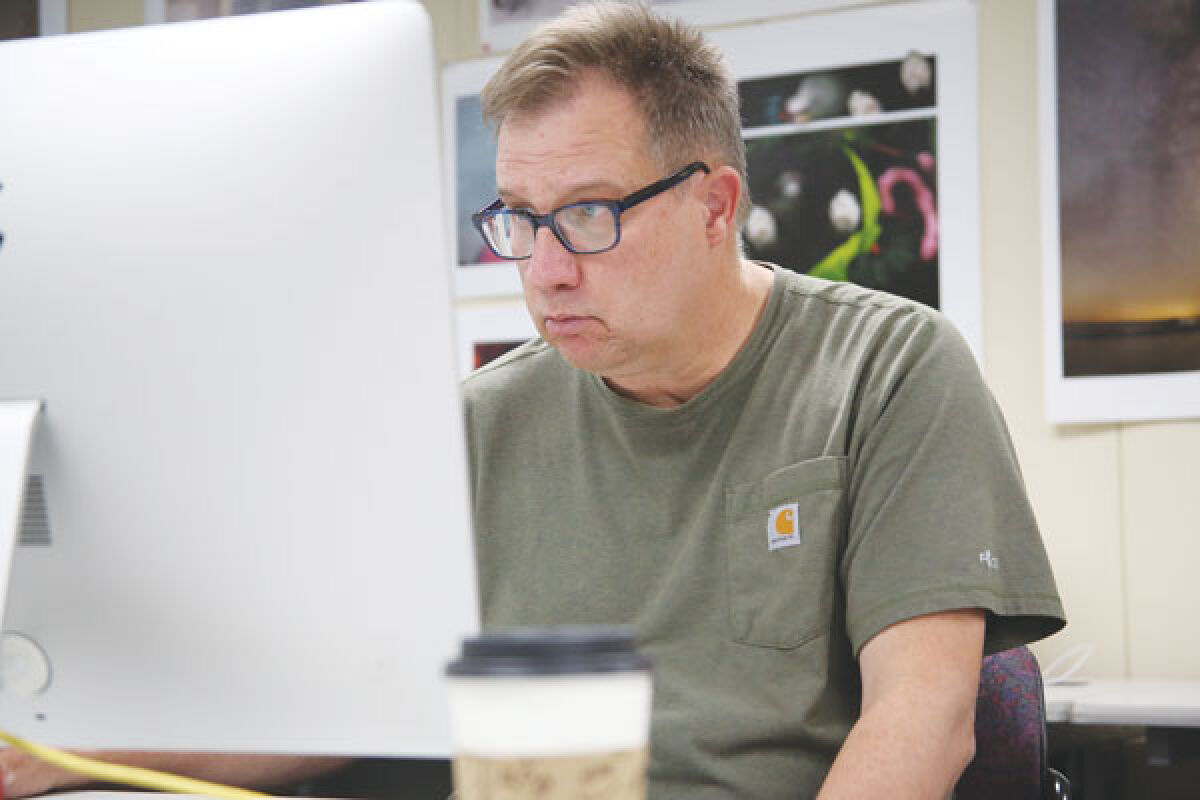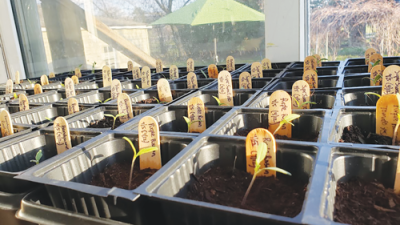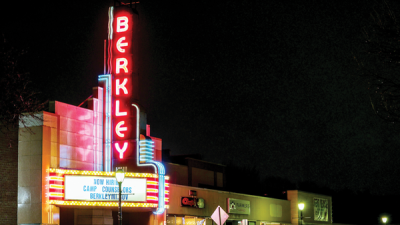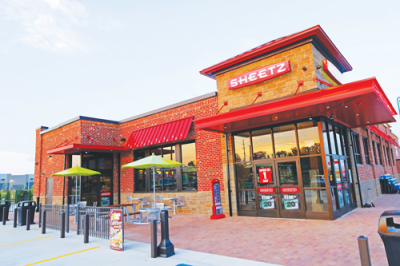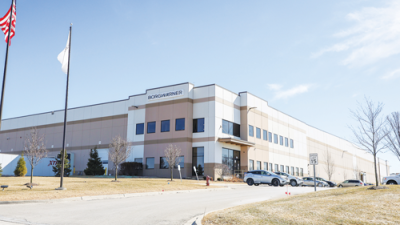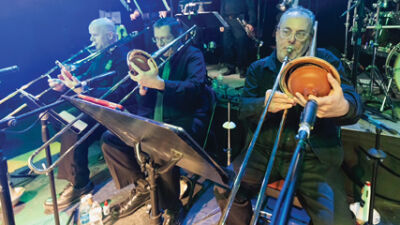METRO DETROIT — Nontraditional students, broadly classified as undergraduates 25 and older, may find going back to school daunting. But with the right help, learning can be an enjoyable and enriching experience.
Joshua McCoury, a nontraditional student at Oakland Community College, said his experience was tough at first.
“I hadn’t been in school in many, many years,” McCoury said. “I’d never taken any online classes so getting into the swing of that was pretty, you know, there was a huge learning curve there. But I overcame that, and it became a lot easier as I went.”
He said that taking the classes online was the hardest aspect of going back to school.
“Before that I had never taken an online class in my life,” McCoury said. “I’d never even heard of Zoom.”
While he wouldn’t say he was nervous, he was unsure about online learning and other aspects of the classes. McCoury went back to school in 2021 during the COVID-19 pandemic. He said at that time, the OCC campus was closed, and everything was remote.
He finished his business administration degree at the college. McCoury said he didn’t have any issues interacting with the other students.
“I’m a pretty outgoing person,” McCoury said.
McCoury also said there were a lot more nontraditional students in his classes than he expected.
“I expected to go back and be in classes full of 18-, 19-, 20-year-old kids. For the most part it was like that, but, I mean, every class that I took had students over 25, for sure,” McCoury said.
According to statistics sent in an email by Kim Madeleine, a marketing and communications representative at Oakland Community College, for the 2023-2024 school year, the college had 7,537 nontraditional students. That represents 40.5% of the student population, compared to 11,061 traditional students, or 59.5% of the student population.
Jennifer Berne, provost at Oakland Community College, said she’s pleased that they have so many nontraditional students at OCC. She thinks those students find the college to be convenient and that they have a wide range of modalities.
“They can take classes face to face, they can take them online, they can take them hybrid,” Berne said. “And that seems to be consistent with the demands of nontraditional students who are often working, taking care of families and have a myriad of responsibilities beyond the classroom.”
Some nontraditional students as well as young students may be nervous to start classes, Berne said.
“College is a big commitment and a big responsibility.” Berne said. “But our nontraditional students tend to do quite well.”
She thinks the way younger students and older students interact with each other is really enriching.
“Nontraditional students often have life experience,” Berne said. “Experience in the workplace, experience from being parents that they bring to the classroom, and it really adds a texture and, I don’t know, a nuance that is very fortifying for everybody.”
A large portion of nontraditional students are in the Associate of Arts program at OCC, Berne said, and that is designed to be a transfer program.
“Students who complete their Associate’s of Arts, sometimes take that Associate’s of Arts and go to work or get a promotion in their job,” Berne said. “But also, often they transfer to a four-year (college).”
She recommends nontraditional students take as many classes as possible that fit into their schedules.
“What we find for our nontraditional students is if they can go just a little bit more quickly through their studies, they tend to be more successful,” Berne said.
Shane Lewis, director of undergraduate admissions at Oakland University, said last fall they had almost 13,000 undergraduate students and around 2,000 nontraditional students, or about 15% of the total. There were only around 10 first-year nontraditional students or adult learners. Transfers took up about 30% of the population.
“So it’s a little bit larger percentage of the students who are coming with credits from another university or the community colleges,” Lewis said.
He said he would say the top major for undergraduate nontraditional students is the second-degree Bachelor of Science in nursing.
“It’s for students who have already earned a bachelor’s degree and they want to come back, and they want a second bachelor’s in nursing,” Lewis said.
This degree has an accelerated program, Lewis said, and it is for those who are looking for a career change. Their nursing completion program is also an accelerated program, and it allows students to continue their careers in nursing while taking online classes.
“A lot of our adult learner students find that very convenient for their lives,” Lewis said about the degree. “Many adult learners have jobs; they have children or families that they’re caring for and so convenience is always a big factor for those students in terms of course modality.”
He also said that some students are nervous when coming back to school. They have a program called Golden Grizzlies Graduate that started in 2019 and they welcome back students who previously started at the university. It is designed to help a smooth transition back into learning and make it less daunting.
“So much has changed already, just in the buildings,” Lewis said. “So I think for a student who’s been, let’s say, away from Oakland for five, 10, 15, 20 years, they might be a little intimidated to come back and to navigate their way through campus.”
Lewis said that the traditional students welcome the nontraditional students.
“More and more people, I think, are recognizing that what we would call the nontraditional student, which is really the adult learner audience, that group. That population of individuals is actually the new majority of those who are in higher education today across the country,” Lewis said.
Patrick Evans-Mach, associate dean of culinary and IT at Macomb Community College, said his students range in age from 17 to people in their 60s. He said the primary group of students fall in the ages of 18 to 24. He usually gets one or two nontraditional students who join classes out of interest.
“We haven’t seen a big increase since like 2010,” Evans-Mach said. “(That) was when we had our Michigan grant, our Michigan Works! grant that paid for people that were in industry to go back and get retrained. That was when we were at our highest.”
He added when the grant ran out, they saw the number of nontraditional students trail off.
While the traditional students welcome and enjoy having the nontraditional students there, the more “seasoned” students feel a bit awkward at first.
“They will feel very conscious about coming back to class and seeing a bunch of the peers being a lot younger,” Evans-Mach said.
The biggest difficulty nontraditional students have is getting over the fear of coming back to school and indoctrinating themselves with the other students, Evans-Mach said. He said they have a fear of not belonging due to their age and have the fear of standing out.
“I think they quickly learn that that’s not true and usually they meet someone within the first two classes or first class and make a good connection,” Evans-Mach said.
He also said that some of the older students sometimes have issues with the newer technologies such as videoconferencing platforms.
“For those that maybe have come back to school after retirement or after they have already completed a career, they’re not used to the conferencing tools and the learning management systems like Canvas that we use here at the college,” Evans-Mach said.
He also said the nontraditional students have a little more resilience and fortitude to apply themselves to their studies.
“And that just comes naturally with being as you mature,” Evans-Mach said. “You tend to be able to be a little bit more, have more foresight or a little bit more earnest in your time management.”
They all have a lot of fun in their classes, Evans-Mach said.
“There’s also opportunities that they will seek me out as far as ways they can better engage the class,” Evans-Mach said. “The biggest part is that they seem to truly enjoy activities.”
He recommends those looking to go back to school take one or two classes to begin with and to engage the instructor.
“Letting them know what they would like to get out of the class,” Evans-Mach said.
McCoury said he recommends others go back to school and work closely with the college guidance counselors. He took classes to allow him to transfer him to a university as well as working toward an associate degree.
“If I would have tried to do it on my own, I would have ended up taking a bunch of stuff that I didn’t need and, yeah, they helped me out a lot,” McCoury said.
 Publication select ▼
Publication select ▼